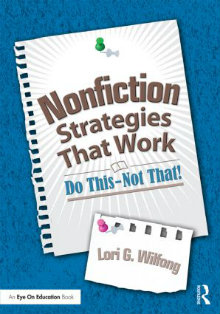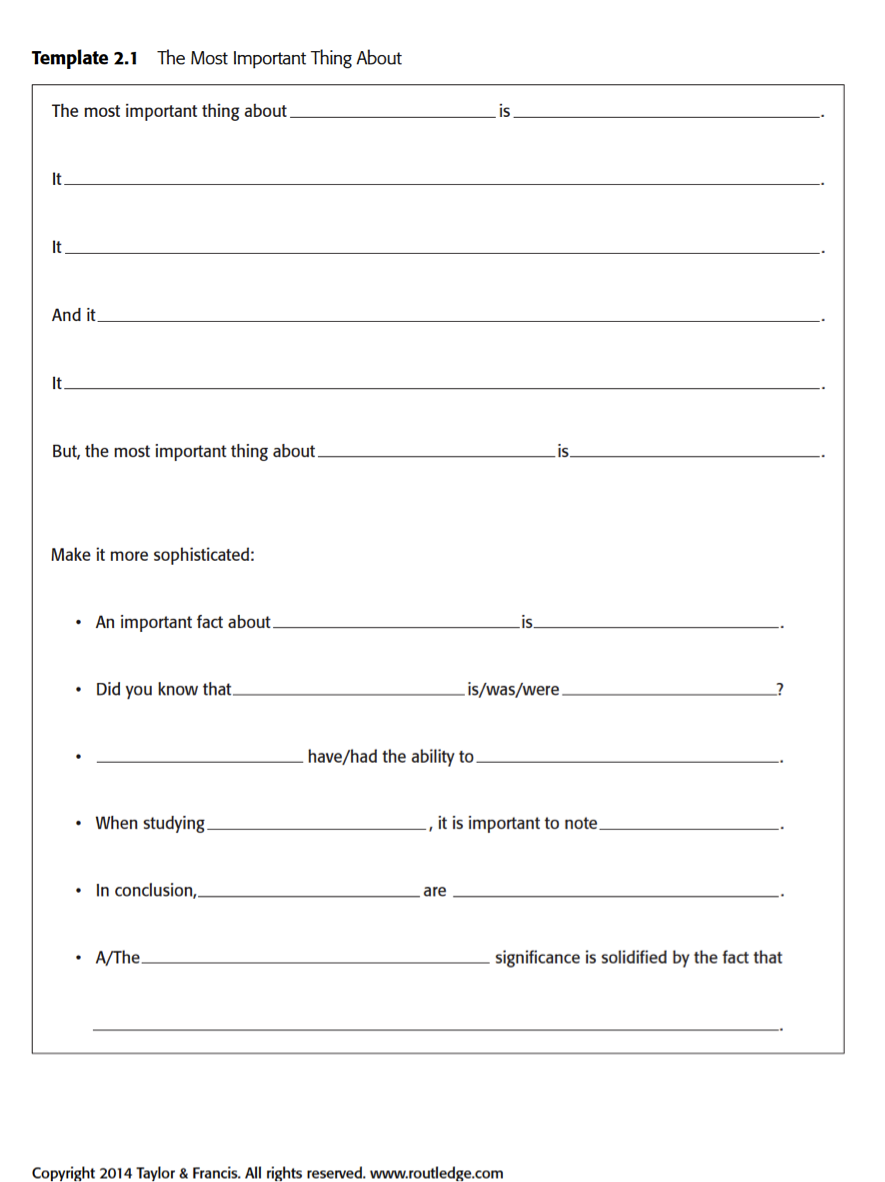Nonfiction Strategies To Engage Students
Nonfiction Strategies That Work: Do This–Not That
By Lori G. Wilfong
(Routledge/Eye on Education, 2014 – Learn more)

When the Common Core State Standards in Reading were first introduced, some of the reactions ranged from “I don’t have enough non-fiction books in my library. Where am I going to get them? My kids love to read. I just got them interested in fiction. How can I get them interested in non-fiction?”

My students started spontaneous book clubs revolving around topics of their interest and created informal lending libraries of their own. My Scholastic book orders have doubled. Nonfiction isn’t the negotiable vegetable on the plate. Fiction isn’t the dessert. They are both “good for you.”
Here’s a book that can really help
Non-Fiction Strategies That Work: Do This–Not That, by Lori Wilfong, provides teachers with a guide to applying the same strategies we have been using to help students become more proficient readers of fiction to nonfiction reading experiences.
At first, I was dubious about Wilfong’s approach. I wasn’t sure how this would work. But after reading her book, I came away with a toolbox of nonfiction/fiction strategies to increase comprehension. After reading only the first 20 pages, I found examples to motivate and help my students become more proficient readers of nonfiction. 10,9,8,7,6,5,4,3,2,1! The book is a book of ten precepts of teaching.
- Select and Instruct Nonfiction Support Strategies with Purpose
- Provide Students with a Range of Scaffolds for Effective Summary Writing
- Implement Quality, Differentiated Nonfiction Texts to Teach Language Arts Standards
- Purposefully Select and Study Vocabulary Words to Support Nonfiction Reading
- Work with Content Area Colleagues to Select Nonfiction Topics that Cross the Curriculum
- Work with Students to Develop Strategies to Cite Evidence When Working with All Texts
- Create and Scaffold Varied and Interesting Nonfiction Writing Assignments that Range from Informal to Formal, Depending on Purpose
- Use Text Structure as Both a Reading and Writing Tool to Assist Students in Analyzing Any Nonfiction Text
- Encourage Independent Reading of Nonfiction Texts as Part of a Balanced Self-Selected Reading Diet
- Use Nonfiction for Active Comprehension Strategies Like Readers’ Theatre, Tableaux, and Character Walks
Let’s take a closer look
Let’s begin by looking at one of the precepts in Chapter 8: Use Text Structure as a Tool (Principle #8).
“DO use text structure as both a reading and writing tool to assist students in analyzing any nonfiction text; DON’T teach text structure in isolation.”
Teaching a strategy in isolation is like being in solitary confinement. You don’t get much out of it but bread and water.
The author begins by cautioning the teacher to involve the students in understanding the “why” of what they are learning. What is the purpose? Next, she presents some updated strategies to help scaffold their learning. I am sure many readers will be thinking that they have seen these strategies before. (Think Mats, Problem/Solution, Compare/Contrast, Concept Maps). You probably did think of these familiar approaches – but think of them in a new light.
Example: Instead of teaching the book Fortunately, Unfortunately (Foreman, 2011) alone as a read aloud, think of incorporating it into another context. I loved the transference of this simple but challenging idea to describe the events of the American Revolution. What a fantastic exit slip, reformatting a fiction literature response for nonfiction reading!
Fortunately,
The American people were ready to work together to fight the British.
But unfortunately,
They did not have the resources or training of the British army and it was a hard fought war.
Another example using The Important Book (Brown, 1949) is a wonderful example of how to use “copy change” as a framework for student writing. And, the best part, the author has provided sixteen of the tools for free downloading. How great is that!
Unfortunately for the reader who wants just lesson plans, this book isn’t for you. Each chapter ends with action steps for you to take, where you reflect on your current teaching practice and then consider how you can apply/integrate this new knowledge.
I am sure you are now wondering how intensive this extra work is going to be. You are thinking that out of the 24 hours that you spend each day teaching, where are you going to fit in more work? Fret not, you don’t have to do each Action Step, but they are a guide to help you reflect actively on your teaching. For example, on page 93 Wilfong writes:
- Start by looking at a set of questions that came with a textbook or text that you use in the classroom. Analyze these questions; do they fall into the higher or lower categories of Bloom’s Taxonomy? Do they really require students to go back into the text to fully answer the questions?
- Revise one of the questions you reviewed above to make it more text dependent. Write your new, revised question.
- Take time to develop a set of text dependent questions on your own! Select a text worthy of study. Then, using the text dependent question development steps, write a series of questions.
You can notice that the activity builds on your current teaching practice, so you are not taking time away from the practice but enhancing your repertoire to have students think deeply and synthesize what they are reading.
Do This— Purchase this book as a selection for your Professional Book Club or just to read independently. Take plenty of notes, highlight, underline, and invest in Post Its and flags to mark the pages. You will enjoy the book from start to finish, scenario to scenario, precept to precept.
Linda Biondi is a fourth grade teacher at Pond Road Middle School in Robbinsville, NJ, and a long-time Morning Meeting practitioner. She’s also the recipient of several educational grants, a Teacher Consultant with the National Writing Project and a participant on the NJ Department of Education Teacher Advisory Panel. Linda participates in ECET2 Celebrate Teaching which has posted an interview with her.


































